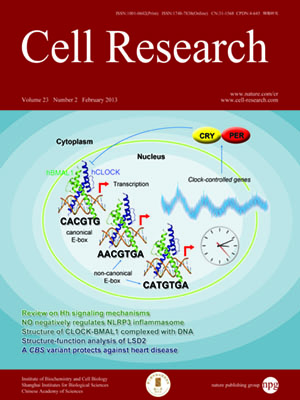
Volume 23, No 2, Feb 2013
ISSN: 1001-0602
EISSN: 1748-7838 2018
impact factor 17.848*
(Clarivate Analytics, 2019)
Volume 23 Issue 2, February 2013: 186-200
REVIEWS
Decoding the phosphorylation code in Hedgehog signal transduction
Yongbin Chen1 and Jin Jiang2
1Key Laboratory of Animal Models and Human Disease Mechanisms of Chinese Academy of Sciences & Yunnan Province, Kunming Institute of Zoology, Chinese Academy of Sciences, 32 Jiaochang Donglu, Kunming, Yunnan 650223, China
2Department of Developmental Biology, University of Texas Southwestern Medical Center at Dallas, Dallas, TX 75390, USA
Correspondence: Yongbin Chen; Jin Jiang(ybchen@mail.kiz.ac.cn; jin.jiang@utsouthwestern.edu)
Hedgehog (Hh) signaling plays pivotal roles in embryonic development and adult tissue homeostasis, and its deregulation leads to numerous human disorders including cancer. Binding of Hh to Patched (Ptc), a twelve-transmembrane protein, alleviates its inhibition of Smoothened (Smo), a seven-transmembrane protein related to G-protein-coupled receptors (GPCRs), leading to Smo phosphorylation and activation. Smo acts through intracellular signaling complexes to convert the latent transcription factor Cubitus interruptus (Ci)/Gli from a truncated repressor to a full-length activator, leading to derepression/activation of Hh target genes. Increasing evidence suggests that phosphorylation participates in almost every step in the signal relay from Smo to Ci/Gli, and that differential phosphorylation of several key pathway components may be crucial for translating the Hh morphogen gradient into graded pathway activities. In this review, we focus on the multifaceted roles that phosphorylation plays in Hh signal transduction, and discuss the conservation and difference between Drosophila and mammalian Hh signaling mechanisms.
Cell Research (2013) 23:186–200; doi:10.1038/cr.2013.10; published online 22 January 2013
FULL TEXT | PDF
Browse 2300


